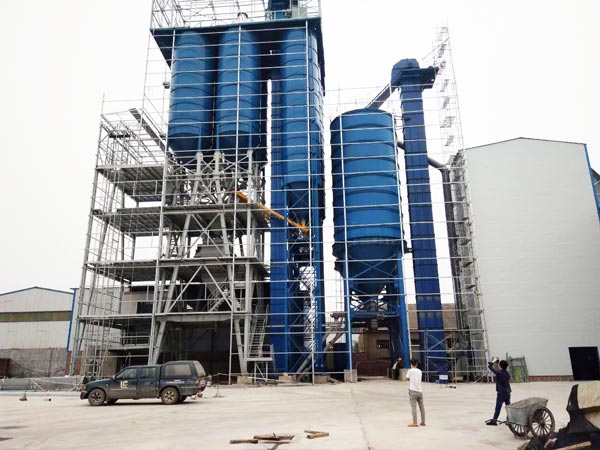The tile adhesive plant is known for its application of bond making. Due to the continued development of the construction industry, there is a significantly high demand for more ceramic tile grout. Hence, there is an increase in the sale of these plants. So, read on as we feature some general information on the tile adhesive plant.
In addition to tile bond, the tile adhesive manufacturing plant can also create a series of different dry mortars. Some of these include those which can absorb sound, resist heat and even be protected against radiation. However, before you can acquire one, you’re going to know which is best for you. On the markets, there are three main designs of tile adhesive plants.
There is a fully automatic tile bond plant which comes fitted with a packaging and a weighing system. Due to the high degrees of automation, the need for downtime is almost completely removed. These also come with a bulk system. However, they can be quite costly.
The second tile bond making plant is smaller in size and costs much less for an investment. Due to its size, it also requires much less floor space than the previously mentioned model. Having a compact nature also allows it to be installed within a standard size workshop for industrial purposes.

The last type of the three is a smaller plant. This tile adhesive production plant requires the least investment and it can be easily and quickly installed. When it comes to maintenance, it is rather simple to maintain. You’re also going to be able to make a quick return on one of the lowest investment that you’ve ever made.
If you didn’t already know, the product produced from these machines is used within the construction industry. They are generally made from a polymer binder, cement, various additives and of course quartz sand. The finished product is then used in order for tiles to bond to various surfaces. Due to the ability of additives, you’re now able to create a product without too many problems.
When it comes to the operations of the machine, raw materials must first be placed into the drying system. The name says it all and the materials are dried during this step. When enough water has been removed and the contents are up to the highest industry standard, the materials are then transferred into storage. However, this is achieved by the use of the hoisting system. Check more here: https://bestonconstruction.com/dry-mortar-production-line/.

Next, the additives along with the sand, raw materials, coal ash, and cement must all be weighed and transferred into the mixer. This ensures that the dry materials are evenly mixed. After they have undergone the mixing process, they are stirred and then sent in to be packaged. During the packaging process, the mixture is packaged into bags and then they are stored in cement silos; if they are required for delivery, they are delivered instead of being stored.
As we conclude, we have just looked at the tile adhesive manufacturing plant. The dry mortar mixing plant can earn you a significant amount of money each month due to the continued development within the construction industry. They also allows you to make a quick return on a relatively small investment.
